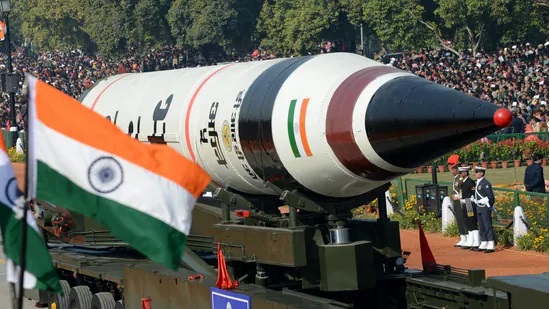
India successfully conducted the first flight test of domestically developed Agni-V missile with Multiple Independently Targetable Re-entry Vehicle technology.
Three years ago, Pakistan attempted to develop the multiple independently targetable re-entry vehicle (MIRV) technology using 2.750 km Shaheen III missile with each warhead hitting the ground at the separation of two kilometres but as per DRDO top brass failed miserably.
With India already having test-fired the 3700 km range K-4 submarine-launched ballistic missile, the successful test of Agni-V reveals that India’s nuclear missile arsenal is ready to deter any adversary and work is already on to develop the Agni-P generation of versatile missiles.
The Indian decision to test fire MIRV equipped Agni-V is largely due to the fact that China has been rapidly developing intermediate-range nuclear ballistic missiles as it has never been part of the now virtually defunct Intermediate Range Nuclear Forces Treaty between US and Russia in 1987 . Due to multiple warheads, the Agni V cannot be intercepted by anti-missile shields as each nuclear warhead has different velocities and separate targets.
Even though India has issued NOTAMs for March 15-16, authoritative sources say that no more test firings are planned as the objective has been achieved and project handlers have returned to headquarters. The project directors will now examine the trajectory and other variables of the missile as recorded by Indian ballistic missile tracker INS Dhruv to make any operational changes if required. Mission Divyastra is a success.

